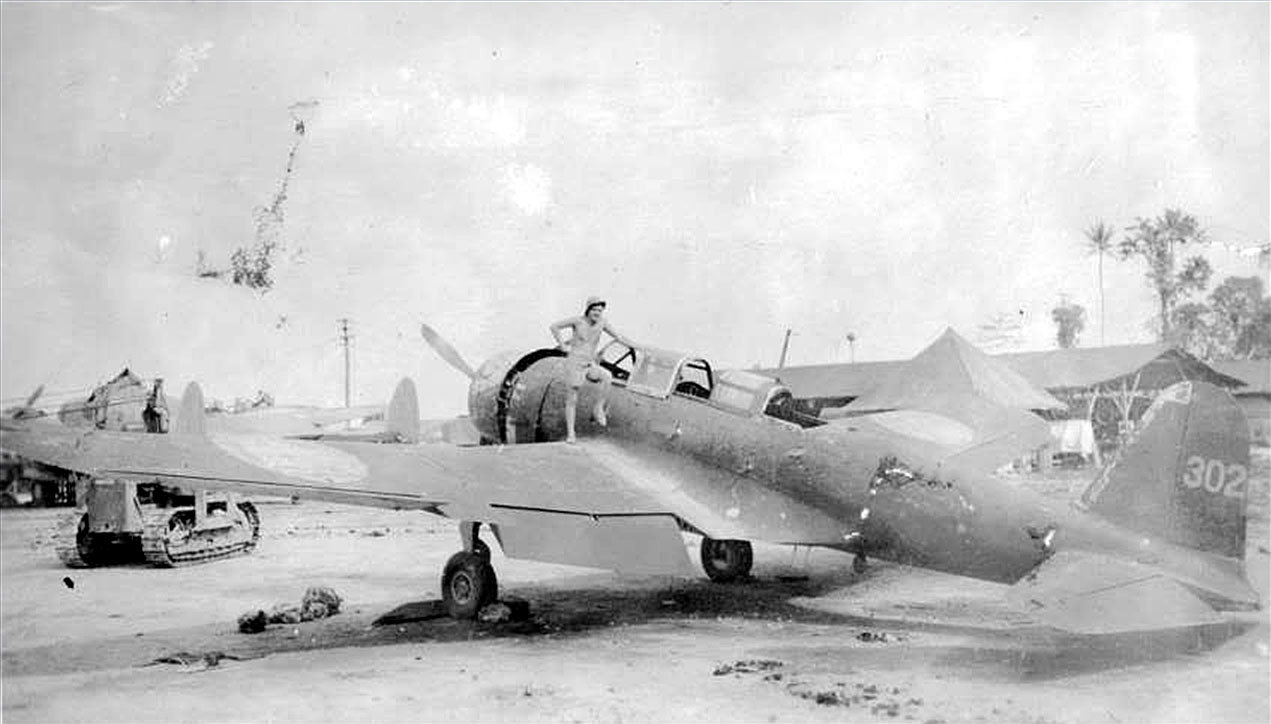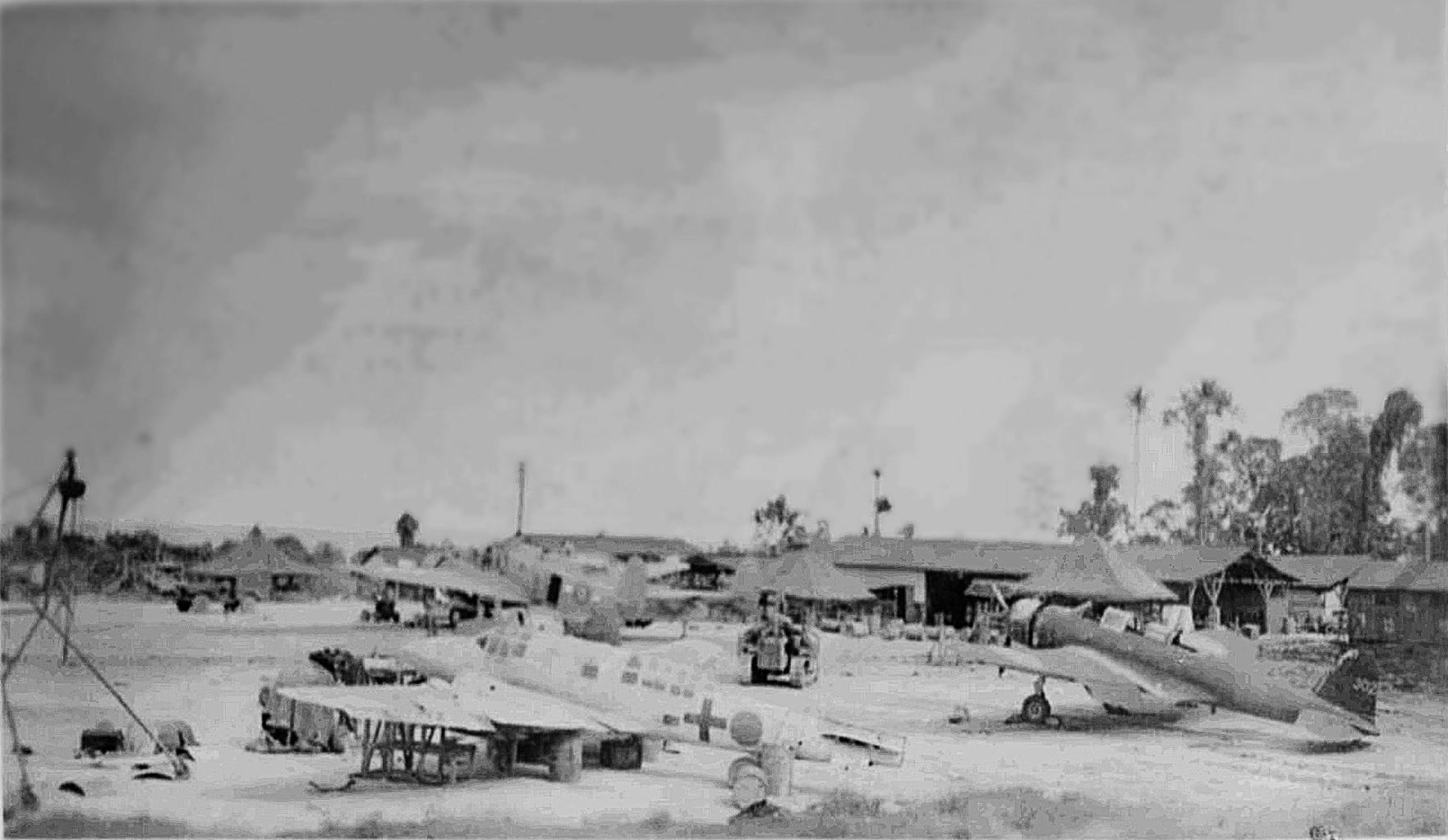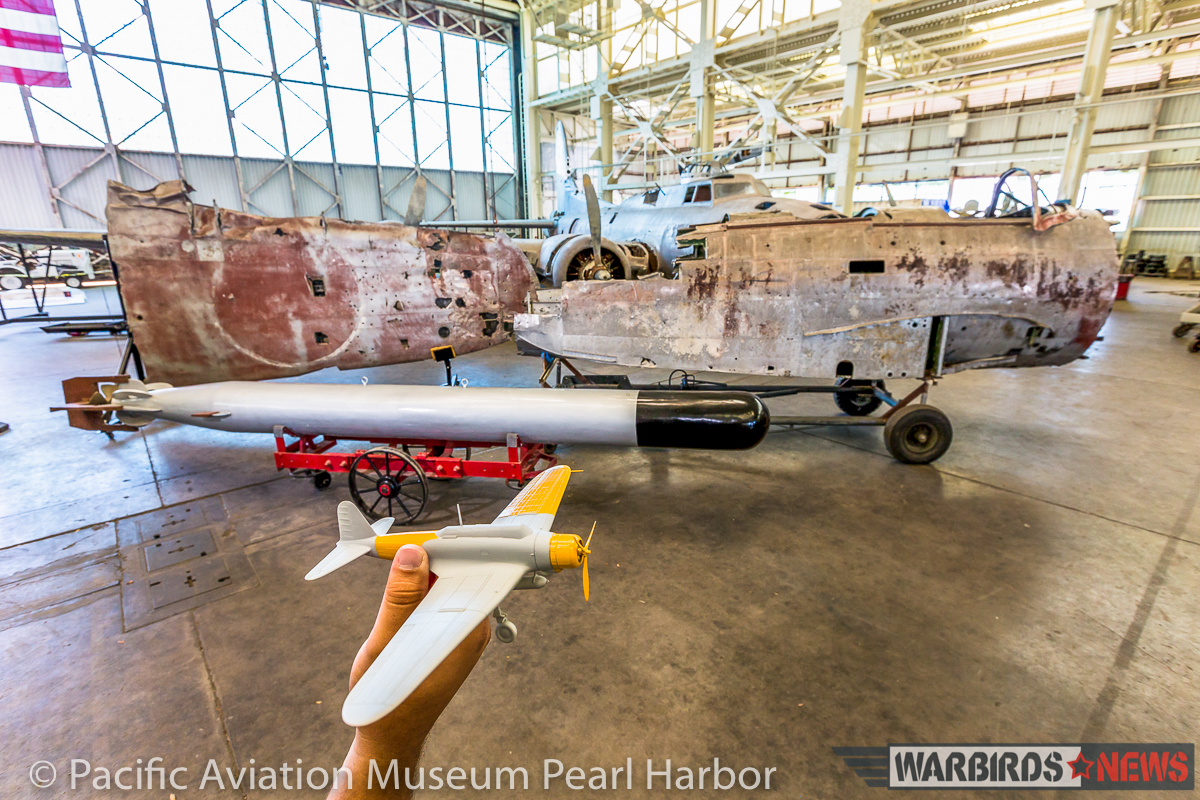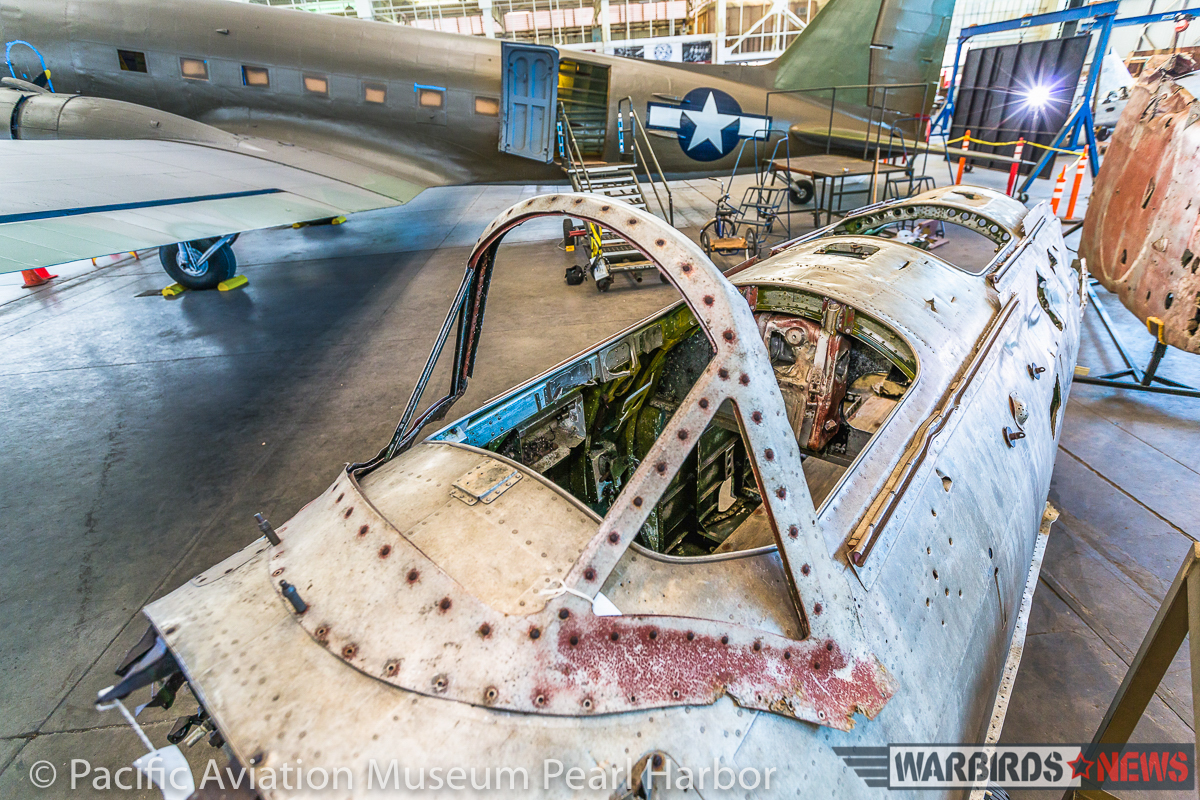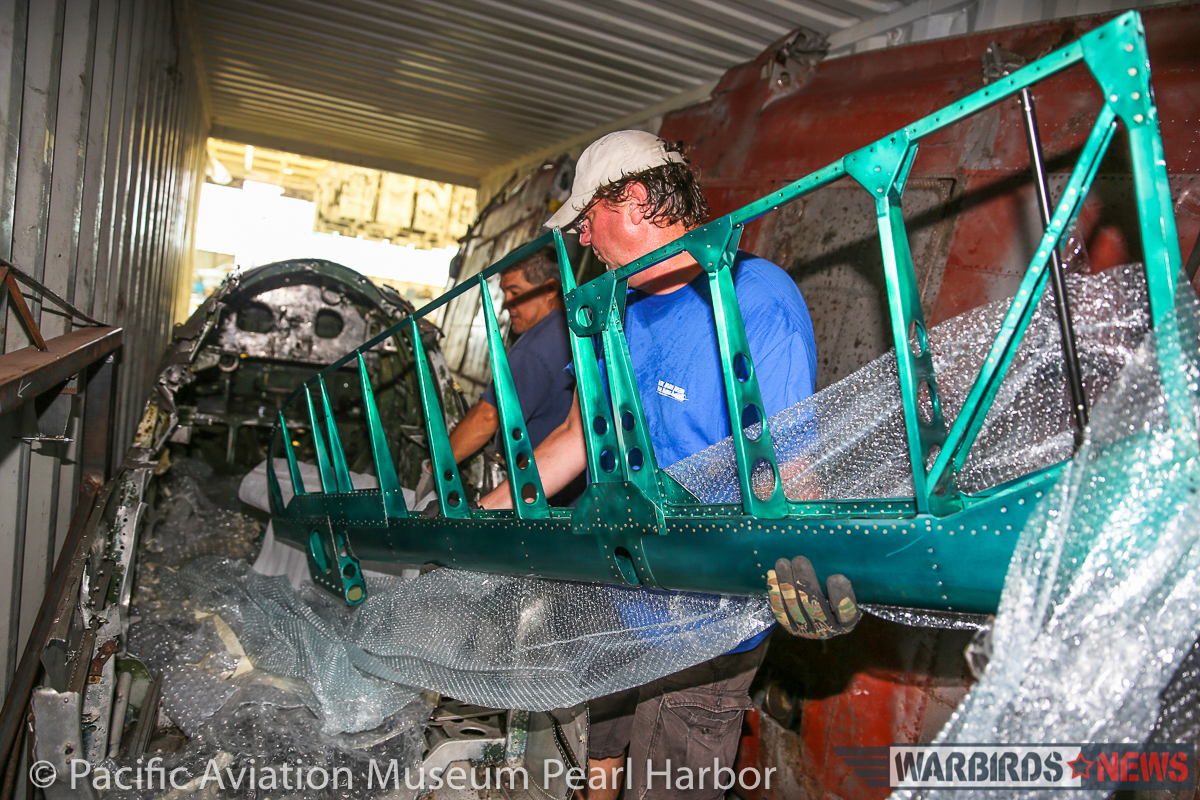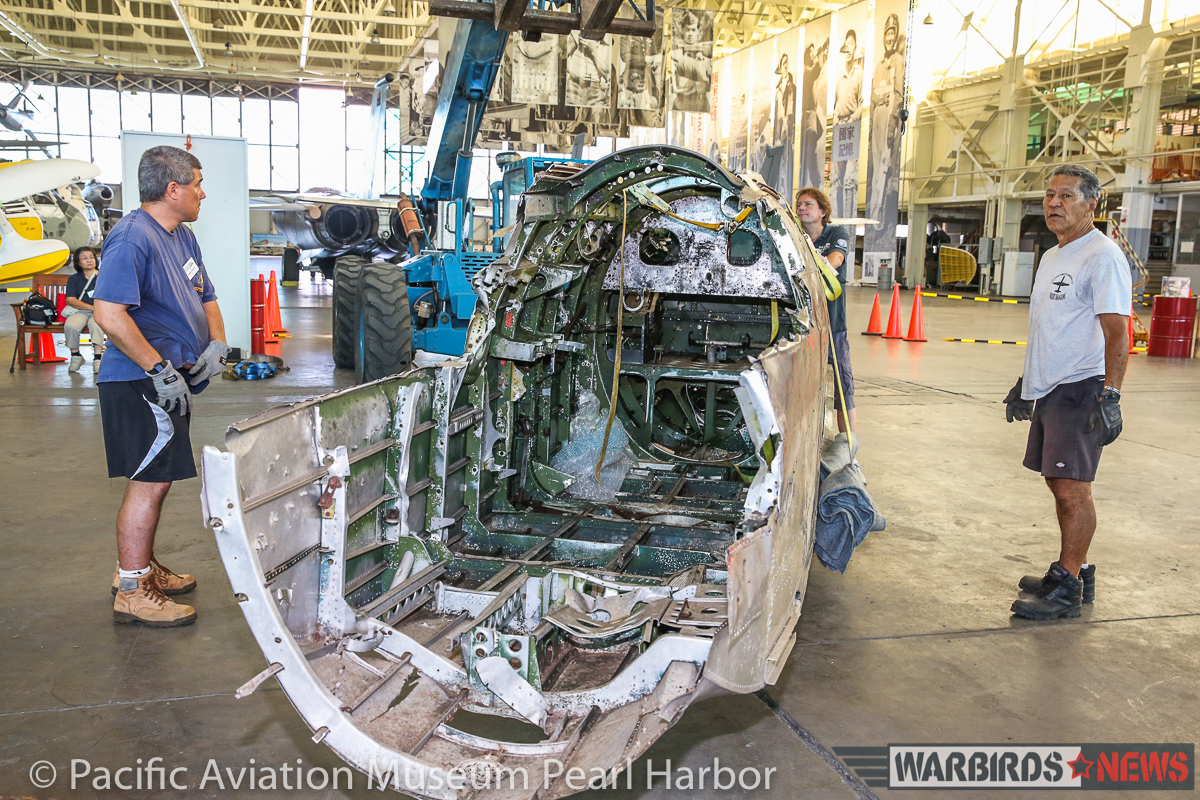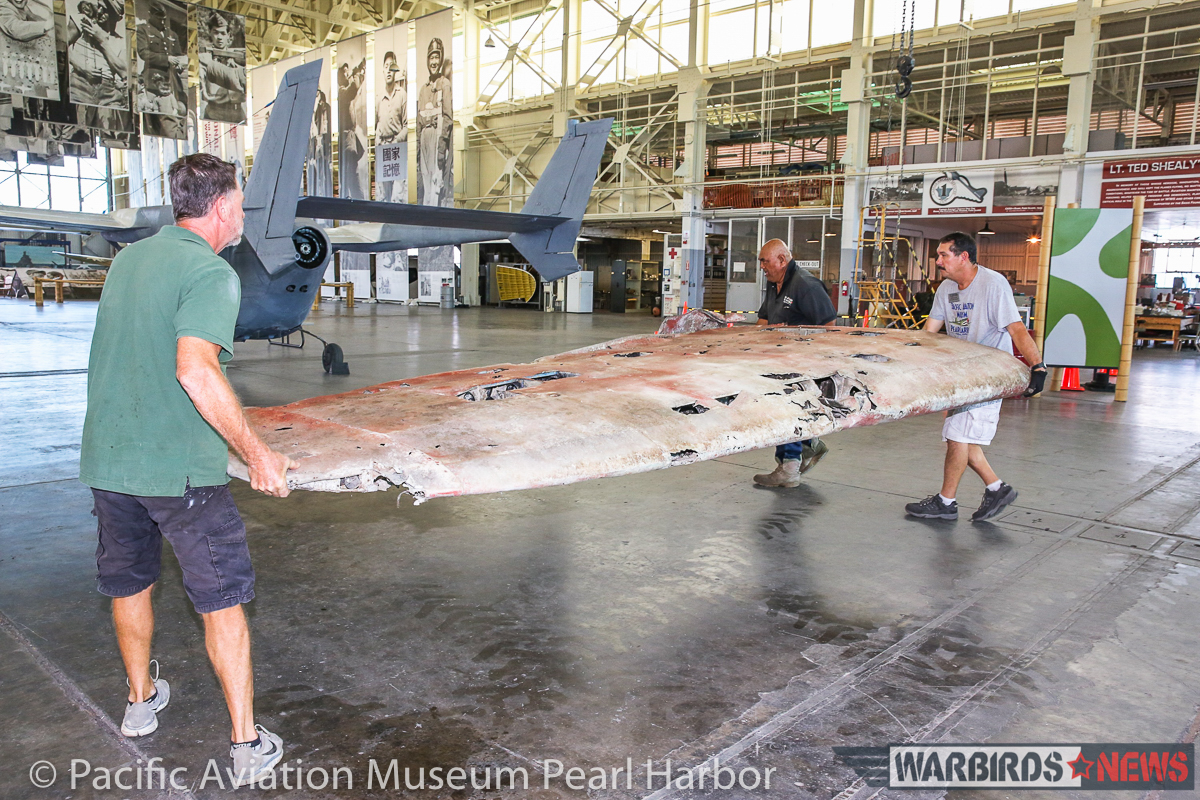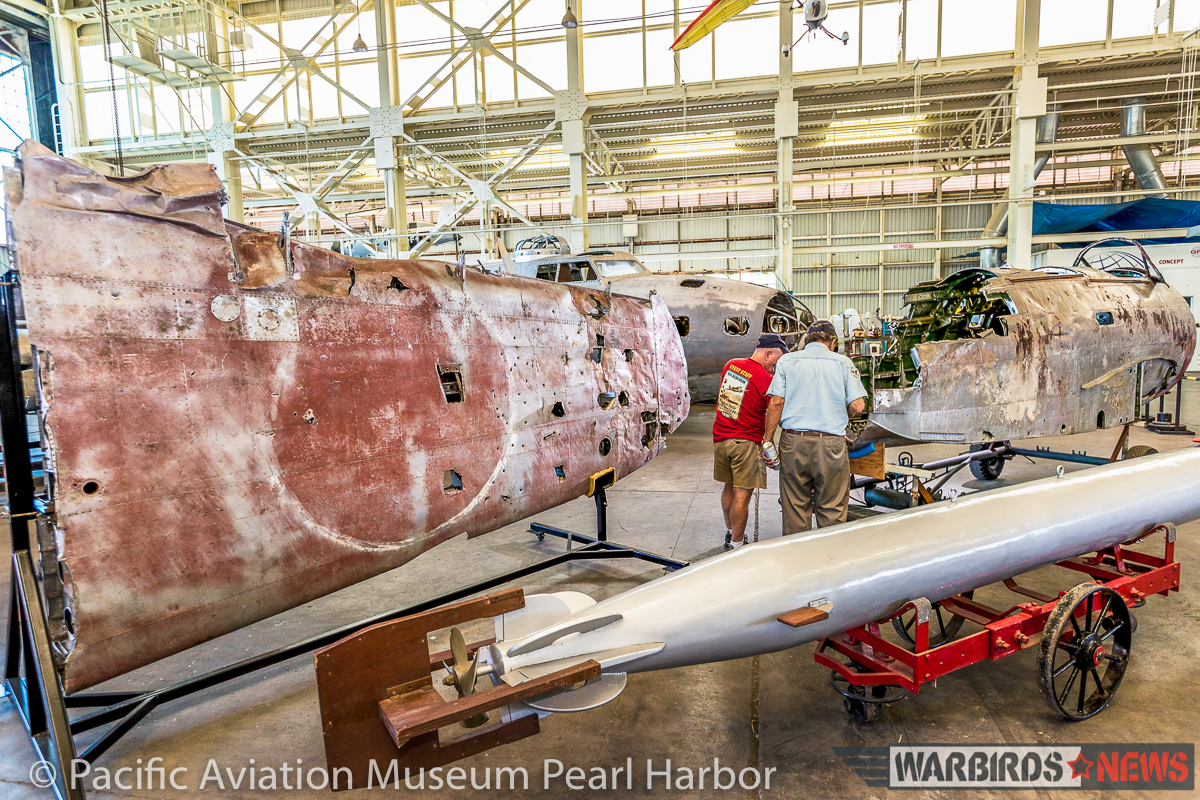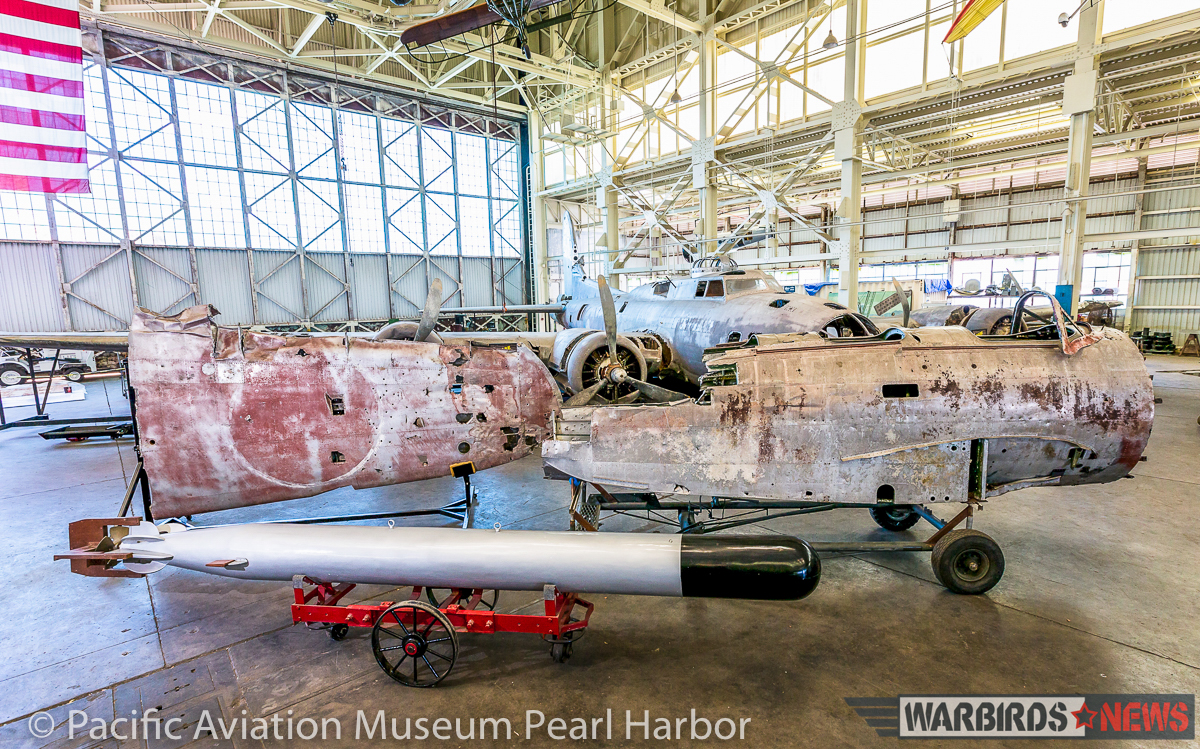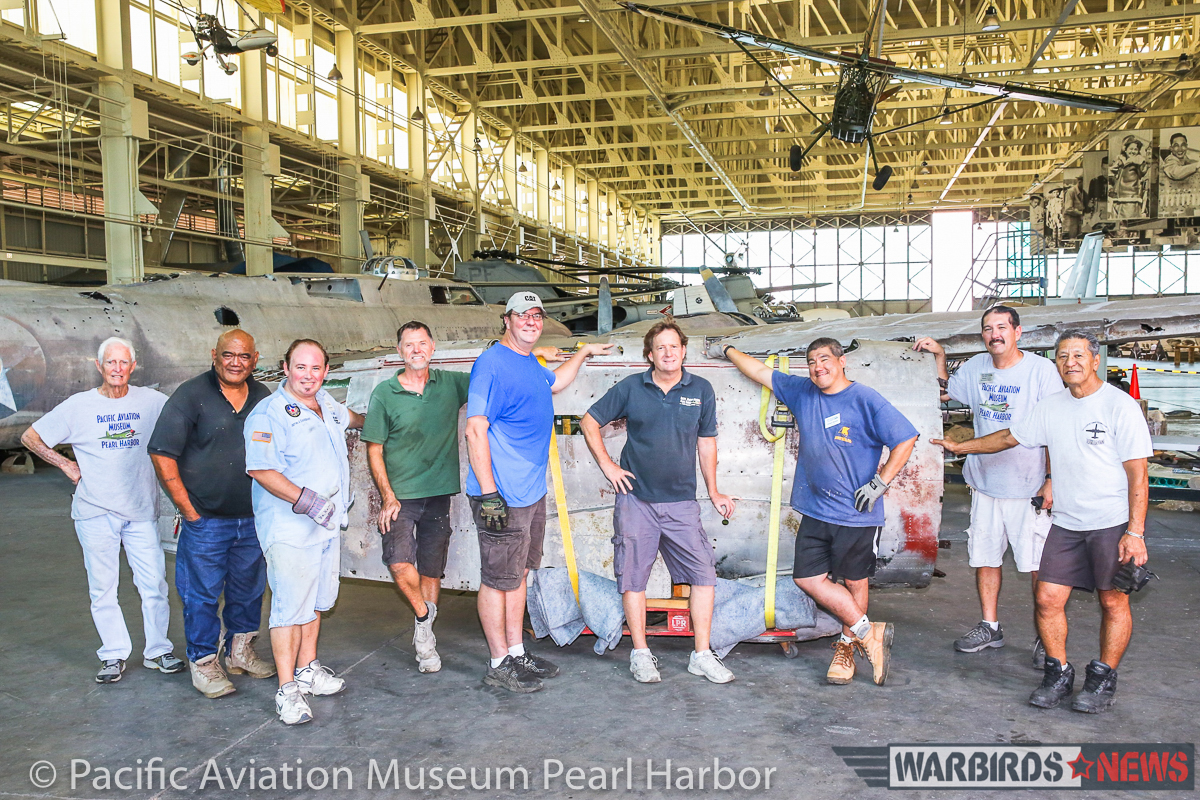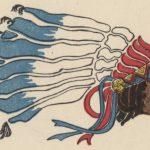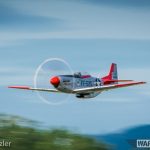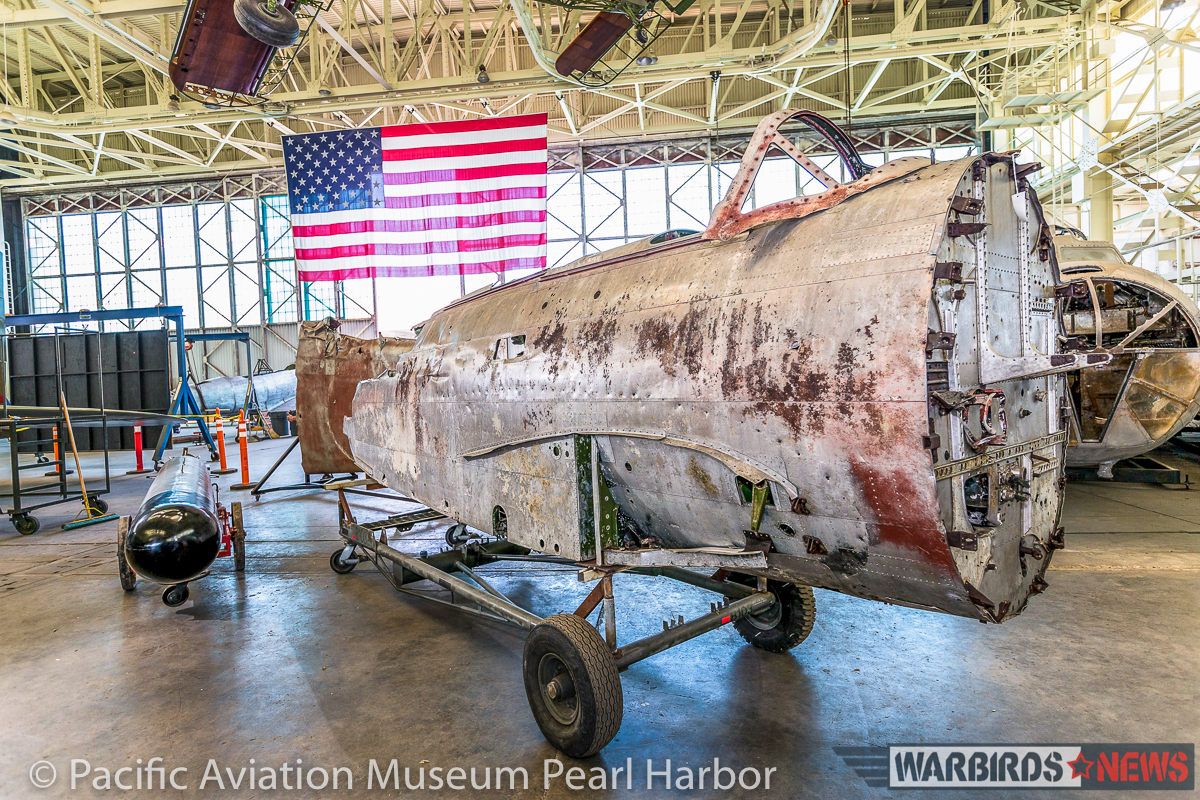
The Pacific Aviation Museum Pearl Harbor unveiled the substantial remains of an ultra-rare, former Imperial Japanese Navy Nakajima B5N2 Type 97 torpedo bomber on Monday, April 18th. Known as the ‘Kate’ to the Allies, this wreck is the most complete of just two preserved survivors. The type became infamous for its leading role in the December 7th, 1941 attack on Pearl Harbor. The only other ‘captive’ example is a hulk recovered from the Kuril Islands a decade or so ago that’s now on display at the Wings Museum in Britain.
While the Pacific Aviation Museum will not officially comment on the history of their B5N just yet, it is reported on Pacific Wrecks.com (and elsewhere) as being the last of the type to formally fly in Japanese hands. Petty Officer Goro Karaoke flew her on October 14th, 1945, escorted by four Royal New Zealand Air Force F4U Corsairs, from Vanukanau airfield on Rabaul to surrender her formally at Jacquinot Bay; a RNZAF base in East New Britain, Papua New Guinea. Interestingly, in his book “Pacific Scrapbook 1943 – 1947”, published by McGraw-Hill in 1997, Bryan Cox, the lead RNZAF Corsair pilot in that formation noted the following…
“One of my most memorable flights was on the 14th October when I took my section to Rabaul for a 9 am takeoff by a surrendered Japanese kate torpedo bomber from Vunakanau airstrip. Apparently not well briefed by the Australians regarding his destination, he headed due west which would have taken him to New Guinea, so I had no option but to formate close to him to guide him with hand signals. Initially I was quite apprehensive regarding possible kamikaze motives, but I soon saw him shaking with fear when 3 other Corsairs weaved over us at high speed, passing so close that I felt the thump of their aircraft a few feet above us – at which point he would pull his head down as if expecting a collision.” ref.
Roy Paton, then serving as a mechanic with the RNZAF, took a few photographs of the Kate shortly after her arrival at Jacquinot Bay in October, 1945, and we received permission to reproduce them here. They offer a fascinating view of the past, and give clear evidence of the aircraft’s markings. Interestingly, unlike the other Japanese surrendered aircraft at the end of the war, the Kate did not receive a green cross insignia… probably as a result of the war having been over for some time already.
The Kate remained at Jacquinot Bay largely as she was for several decades, until the early ’80s, when locals took her apart and moved the hulk, along with the co-located Ki-46 Dinah, to another location for display. As is typical in such situations, both aircraft became subject to souvenir hunting, but still retained much of their structure.
The Pacific Aviation Museum Pearl Harbor acquired their Kate some years ago, but they have only recently removed it from storage. It had been in New Zealand for some years following its export to Australia in 2005. Two Australians, Ian Whitney and Bruno Carnavale acquired the aircraft from New Guinea in the mid-2000’s along with several other wrecks from the same location. (Check out a fascinating interview of Ian Whitney by noted aviation history authorities Dave Homewood and James Kightly HERE – the interview proper begins about 4:30mins in).
The Kate’s serial number is unknown at present, as no relevant data plates remain with the aircraft. However, given the historical references and photographic record, the aircraft clearly flew as plane ‘302’ with the 105th Naval Base Unit during the latter part of the war. While it is possible that this Kate could have taken part in the attack on Pearl Harbor, it is unlikely this could ever be proven. That being said, the museum is excited to finally have the aircraft on show as they build up towards the 75th anniversary of the raid this December. It will form an important part of their exhibit, given the type’s pivotal role in sinking so many US warships on that dark day.
In an e-mail interview with Ken DeHoff, the museum’s Executive Director – Operations, he stated that they have roughly 75% of a complete B5N2. They will restore the aircraft to static condition using as much original material as possible. The work will be a collaborative effort between the, “…Pacific Aviation Museum under the coaching of Jim Martinelli and help from Pioneer Aero, in Auckland NZ and Paul McSweeny.” DeHoff added that, “All restorations are challenging. This aircraft never crashed. It flew to where it was parked and then lay abandoned after the troops went home. So the fuselage is straight. We have been working on piece parts. The starboard landing gear was missing and the port side was frozen. We freed the corroded shaft then built a new one for the left side. We have already found the instruments and the bomb sight. Now it’s just the detailed work fabricating piece by piece. We wanted to get this started before all of the Japanese pilots went west. And we need donations to help fund the restoration. It will be a long haul – estimated to be about 5 years.”
If any of our readers have parts they think the project could use, or would like to make a donation to the restoration fund, please do visit the link HERE to find out how to contribute.
WarbirdsNews wishes to thank the staff at the Pacific Aviation Museum Pearl Harbor for their help in creating this article, as well as for providing us with the photographs shown here. We wish them well in their work, and will endeavor to bring updates on this important project as they become available! Many thanks also go to Dave Homewood at Wings Over Cambridge in New Zealand for providing the vintage photographs of the Kate.








